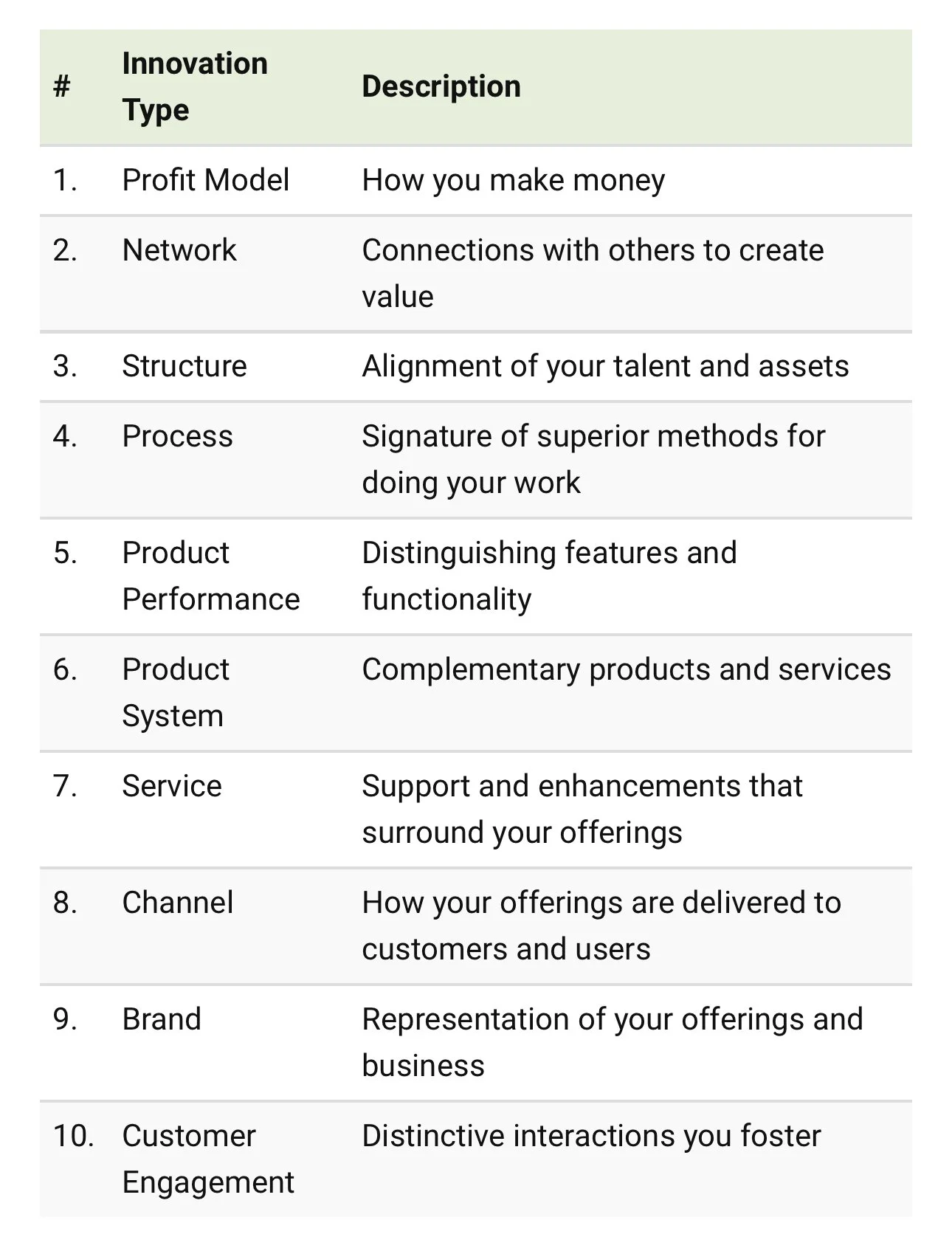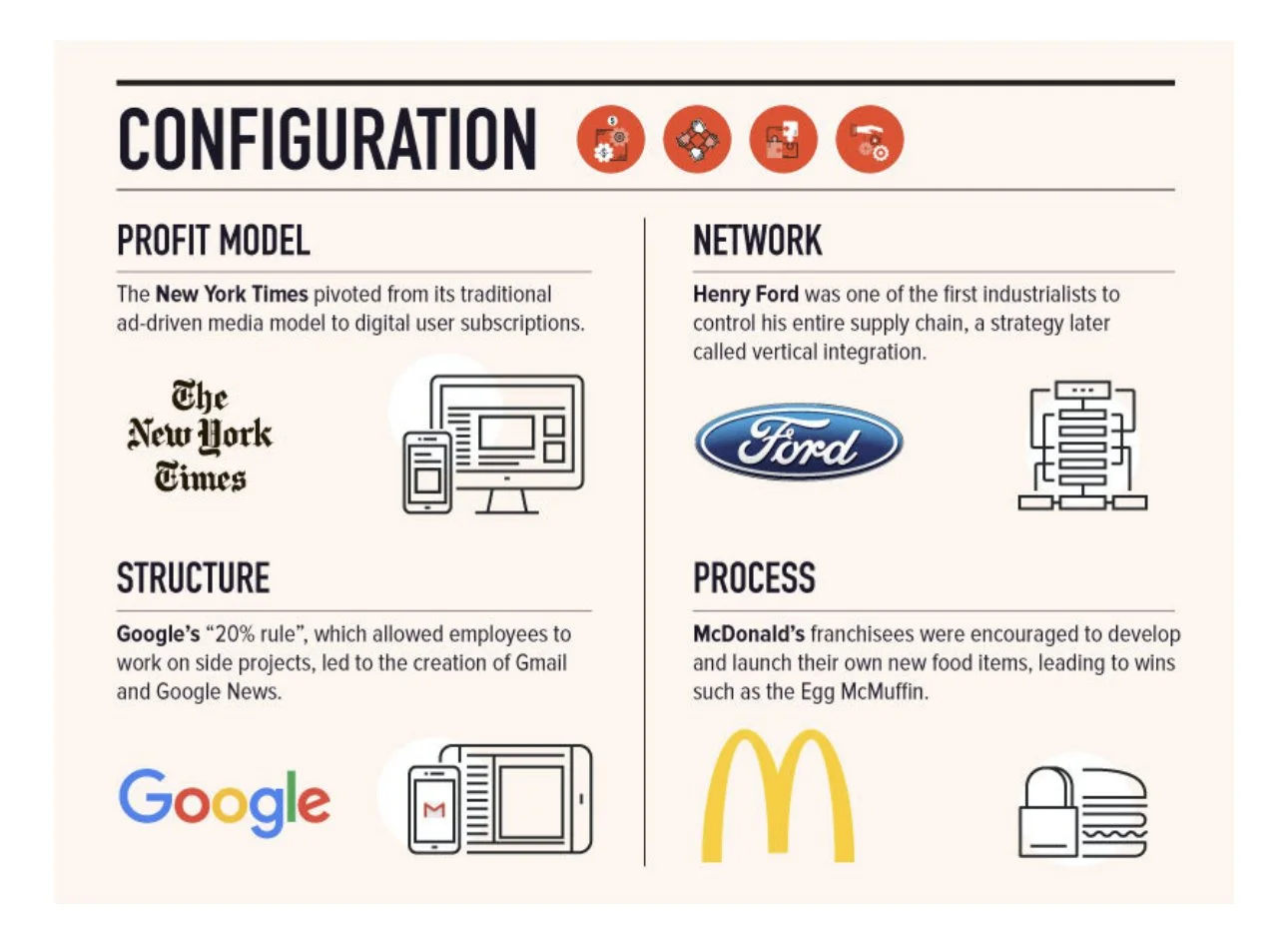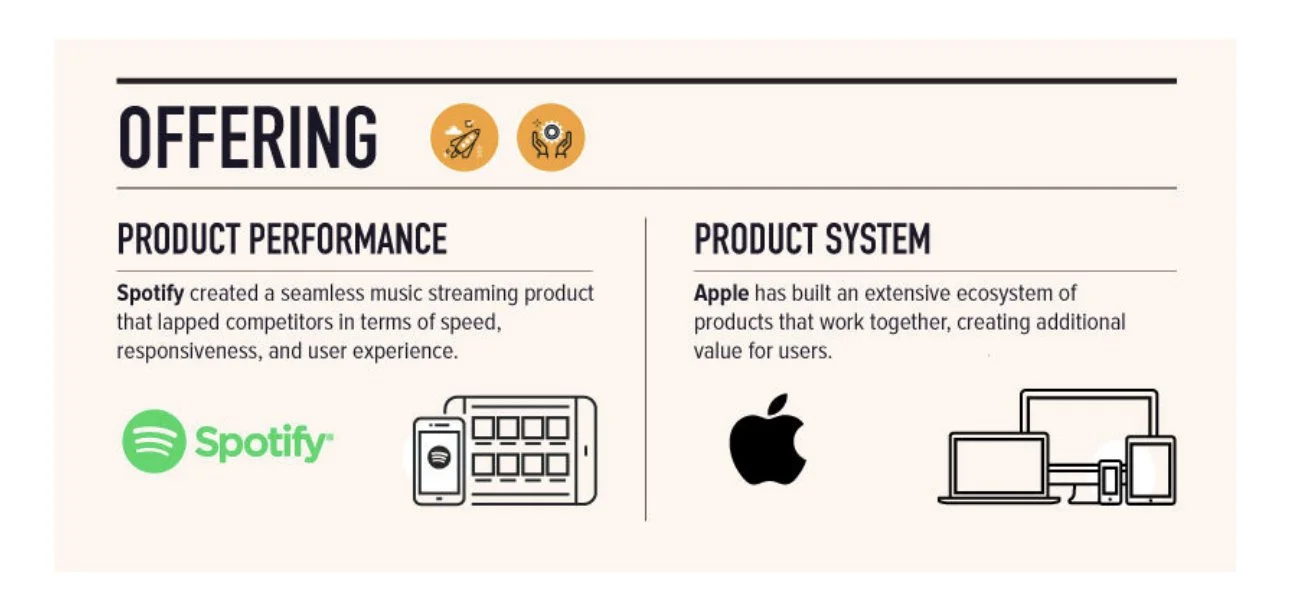10 Types of Innovation: The Art of Discovering a Breakthrough Product
The Art of Discovering Breakthrough Products
As venture capitalist Peter Thiel once put it, “competition is for losers.”
It’s inevitable that every company must be out there battling for market share, but you don’t really want to be in a situation where the competition is so stiff that any potential upside is eroded away in the process—―a scenario known as perfect competition in economics.
To avoid perfect competition, companies must strive to build an economic moat that gives them a sustainable competitive advantage over time. While these protective moats can arise from a number of different sources, in today’s information economy they most often arise from the power of innovation.
But where does innovation come from, and is there a universal framework that can be applied to help consistently make big breakthroughs?
The 10 Types of Innovation
In today’s infographic, we showcase the culmination of years of in-depth research from Doblin, an innovation-focused firm now owned by Deloitte.
After examining over 2,000 business innovations throughout history, Doblin uncovered that most breakthroughs don’t necessarily stem from engineering inventions or rare discoveries.
Instead, they observed that innovations can be categorized within a range of 10 distinct dimensions—and anyone can use the resulting strategic framework to analyze the competition, to stress test for product weaknesses, or to find new opportunities for their products.
Here are the 10 types of innovation:
From Theory to Practice
What does innovation look like in practice?
Let’s see how well-known businesses have leveraged each of these 10 types of innovation in the past, while also diving into the tactics that modern businesses can use to consistently make new product breakthroughs:.
Innovation Types #1-4: “Configuration”
According to Doblin, the first four types of innovation center around the configuration of the company, and all the work that happens “behind the scenes”.
Although innovation types in this category are not directly customer-facing, as you can see in the examples below, they can still have an important impact on the customer experience. How your company and products are organized can have a crucial downstream effect, even enabling innovations in other categories.
Two of the most interesting examples here are Google and McDonald’s. Both companies made internal innovations that empowered their people to make important advancements further on downstream.
In the case of McDonald’s, the franchisee insight that led to the introduction of the Egg McMuffin spearheaded the company’s entire breakfast offering, which now accounts for 25% of revenues. Breakfast is also now the company’s most profitable segment.
Innovation Types #5-6: “Offering”
When most people think of innovation, it’s likely the offering category that comes to mind.
Making improvements to product performance is an obvious but difficult type of innovation, and unless it’s accompanied by a deeply ingrained company culture towards technical innovation, such advancements may only create a temporary advantage against the competition.
This is the part of the reason that Doblin recommends that companies focus on combining multiple areas of innovation together—it creates a much more stable economic moat.
Apple has a reputation for innovation, but the product ecosystem highlighted above is an underappreciated piece of the company’s strategy. By putting thought into the ecosystem of products—and ensuring they work together flawlessly—additional utility is created, while also making it harder for customers to switch away from Apple products.
Innovation Types #7-10: “Experience”
These types of innovation are the most customer-facing, but this also makes them the most subject to interpretation.
While other innovations tend to occur upstream, innovations in experience all get trialed in the hands of customers. For this reason, intense care is needed in rolling out these ideas.
In the early days of the internet, online shipping was precarious at best—but Amazon’s introduction of Amazon Prime and free expedited shipping for all members has been a game-changer for e-commerce.
Executing on such a promise was no small task, but today there are 150 million users of Prime worldwide, including some in metro areas who can get items in as little as two hours.
Making Innovations Happen in Your Organization
How can organizations approach the 10 types of innovation from a more tactical perspective?
One useful resource is Doblin’s free public list of over 100 tactics that correspond with the aforementioned framework.
The one-pager PDF provides a range of typical dimensions for approaching each type of innovation. In essence, these are all different ways you could consider when trying to differentiate your product or service—and at the very least, it provides a useful thought experiment for managers and marketers.






